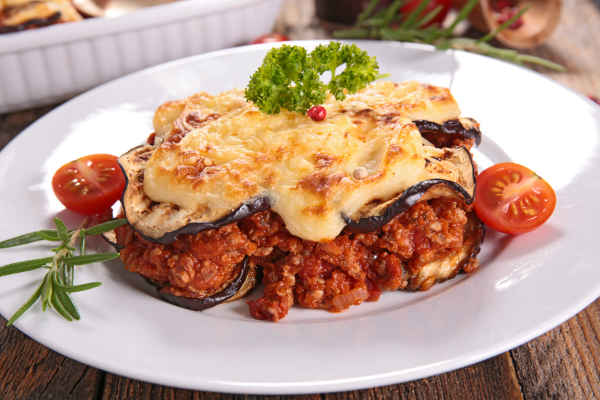
As a fellow vegetarian (predominately vegan when I’m at home) who has spent the last two summers traveling around Europe, I know the struggle is definitely real when you’re trying to experience authentic cultural foods, stay healthy, budget friendly AND vegetarian or vegan… there are a lot of boxes to tick! While I definitely learnt the hard way by eating copious of amounts of sugar and carbs and putting on almost 10 kilograms on each trip (oops!), I have also learnt some helpful tips and tricks that might prevent you from having the same problems.
Keep close to a kitchen
If you have the option to stay in accommodation with a kitchen, this will make your life so much easier, as you can cook meals to your dietary requirements and keep costs down too. Most hostels and Air BnB’s offer a kitchen and it’s easy to go to a local supermarket or convenience store to pick up some basic staple ingredients such as chickpeas, tomatoes, rice or pasta. Some of my favourite, super easy and cheap meals to cook while travelling are: pesto pasta with spinach leaves and cherry tomatoes, vegan burger patty or schnitzel with salad and ‘nacho bowls’ with rice, beans and lentils cooked in a Mexican seasoning with salad. These are my go-to’s, but for more inspiration, try these free apps: 21 Day Vegan Kickstart and Food Monster.
Embrace the most important meal of the day
Even when hostel or hotel breakfasts are included, they’re often white bread, sugary spreads and cereals, so instead I chose to carry my own. For breakfast, I bought individual sachets of oats and a jar of peanut butter, then would simply add hot water and microwave it. If you’re a vegetarian, there is almost always free milk in hostel kitchens you can add. For vegans, you can buy powdered coconut milk which makes the oats deliciously creamy with just water. Sometimes I would also buy a loaf of good quality bread, then toast or eat it fresh with peanut butter or jam, and sliced banana. I carried a little bag with some food supplies and utensils that allowed me to be self sufficient in hostels and in Couchsurfing hosts homes, as well as making sure I ate relatively healthily. This included the breakfast staples above, a container holding my bag of tea (that could be used for storing leftovers), a travel mug, and cutlery.
Use handy apps to find local restaurants
It’s rare to travel without a phone in our hand nowadays, so you might as well put technology to good use and find the best local vegan or vegetarian restaurants in your area. I usually start with Tripadvisor, and filter it by type of food and price, as I like seeing the reviews and pictures of the food from customers. There are a lot of apps made specifically for vegan travellers though, which use your location to tell you where the best vegan food options around you are. Some of the better ones are Happy Cow ($5.99) and Vegman. There is even Air Vegan ($2.99), which lets you know how vegan friendly certain airports are. If all else fails, never fear, you can almost always find a kebab shop that will make a vegan falafel wrap.
Learn the lingo
Google Translate the words for ‘milk', ‘eggs’, ‘chicken’, ‘beef', ‘pork’ and ‘fish’ in the local language spoken in whichever country you’re visiting, so you can easily identify them on a menu or food packaging. I’d also learn the word for ‘vegan’ or ‘vegetarian’, so you can let the server at restaurants know your diet - but don’t be surprised if they don’t really understand what veganism is and still try to serve you meat or fish products! Alternatively, you can use the Vegan Pocket app, which will scan a product and let you know if it contains animal products or not. You can also download a language onto the Google Translate app while you’re in wifi, then decipher foreign words while offline. Other fantastic apps that provide translations of vegan key words or descriptions of veganism into different languages are V-cards and Vegan Passport ($2.99).
Don’t just binge on desserts
Learn from my mistakes… I would look at menus full of delicious cultural dishes that were all predominately meat, and end up ordering the only vegetarian option, which was usually pasta or a salad. It was only when it came to dessert that I would be able to try something new and local to the area I was in, and I took full advantage of that! I ate so much cake, pastry, chocolate and gelato, it’s no wonder I ended up gaining so much weight - YOLO! In hindsight, I wouldn’t recommend it as there are so many delicious, healthy restaurants that cater specifically to vegetarian or vegan versions of local dishes. It can be difficult when traveling with other people that don’t have the same diet, but if you’re going to treat yourself by going out for a meal, aim for quality over quantity and choose a place that will be worth every carb-loaded bite! Usually the staff at your accommodation can provide great advice on where to go for veg alternatives of local dishes.







